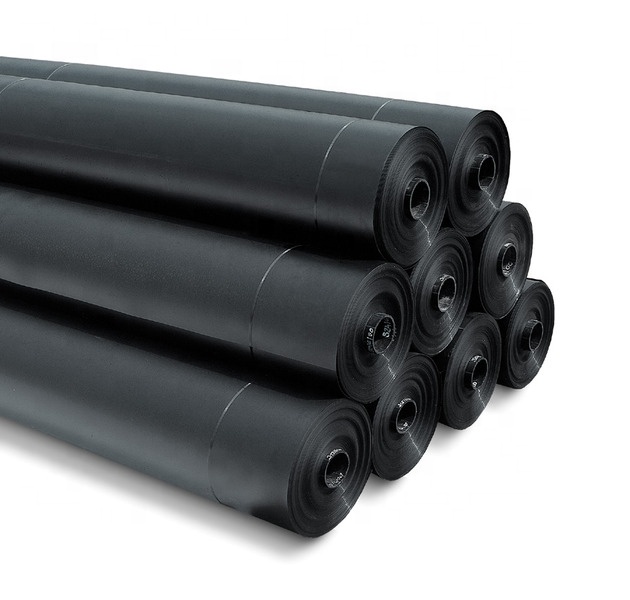What is hdpe geomembrane
HDPE geomembrane is a geotechnical waterproof material based on high-density polyethylene (HDPE). It is usually used in civil engineering for waterproofing, anti-seepage, sewage treatment, ponds, water conservancy projects, road projects and other fields.
This kind of geomembrane has good anti-permeability and chemical stability, can effectively prevent the penetration between soil and water, and plays the role of waterproofing, isolation, protection and reinforcement.
HDPE geomembrane has the advantages of chemical corrosion resistance, aging resistance, tear resistance, anti-penetration and good mechanical properties, and can effectively cope with complex soil and water environments.
It is generally supplied in roll form and can be cut, welded and installed as needed, with a certain degree of flexibility and adaptability.
This material has a wide range of applications in engineering and is often used in underground engineering, water conservancy engineering, environmental engineering, road engineering, agricultural anti-seepage and other fields.

hdpe geomembrane price
The price of HDPE geomembrane varies depending on a variety of factors, including thickness, specifications, suppliers, geographical location and market demand. Prices will vary based on the specific requirements of project needs. Usually, the price of HDPE geomembrane is calculated in square meters or rolls. Here are some approximate price ranges for your reference:
Conventional HDPE geomembrane: Generally, the price of HDPE geomembrane in standard specifications (such as 1.0mm thickness) is approximately between US$2 and US$5/square meter, depending on the region and supplier.
High Specification HDPE Geomembrane: For special projects, thicker HDPE geomembrane may be required. The price of these geomembranes will be higher, generally between US$5 and US$10/square meter.
Large rolls of HDPE geomembrane: If you need a large volume of geomembrane, you can usually get some discounts and the price may be more competitive.
Customized projects: For HDPE geomembranes with special specifications, colors or other custom requirements, the price may vary and needs to be negotiated with the supplier.
The process difference between hdpe geomembrane and eva geomembrane
HDPE (high-density polyethylene) geomembranes and EVA (ethylene vinyl acetate copolymer) geomembranes are two materials commonly used in land engineering and waterproofing applications. They have significant differences in manufacturing processes and properties:
material ingredient:
HDPE geomembrane is made of high-density polyethylene, a thermoplastic polymer with good resistance to chemical corrosion, abrasion and aging.
EVA geomembrane is made of ethylene-vinyl acetate copolymer, which is softer and more flexible than HDPE.
Manufacturing process differences:
HDPE geomembranes are usually manufactured by the extrusion method, which involves heating, extruding and cooling HDPE particles to form a film. This process can achieve geomembranes of different thicknesses and sizes by adjusting the parameters of the extruder.
EVA geomembrane is manufactured through a hot melt method. During the manufacturing process, EVA particles are usually mixed with other additives and heated and melted, and then extruded or coated to form a geomembrane.
Performance differences:
HDPE geomembranes generally have high impermeability and chemical resistance, and are suitable for applications that require a high degree of waterproofing and resistance to chemical attack, such as landfills, dams, pond linings, etc.
EVA geomembrane is softer and therefore adapts more easily to irregular surfaces. It has better bending properties at low temperatures and is suitable for applications in low temperature environments. EVA geomembrane is usually used for underground pipe waterproofing, roof waterproofing and other occasions where flexibility is required.
Application areas:
HDPE geomembranes are primarily used in applications requiring high impermeability and resistance to chemical attack, such as waterproofing, pond linings, environmental engineering, and landfills.
EVA geomembrane is more suitable for applications requiring flexibility and low temperature resistance, such as underground pipeline waterproofing, roof waterproofing, and waterproofing layers of underground structures.
In general, there are significant differences between HDPE geomembranes and EVA geomembranes in terms of material composition, manufacturing process, and performance. Therefore, when selecting a geomembrane, you need to make an appropriate choice based on specific engineering needs and environmental conditions.



